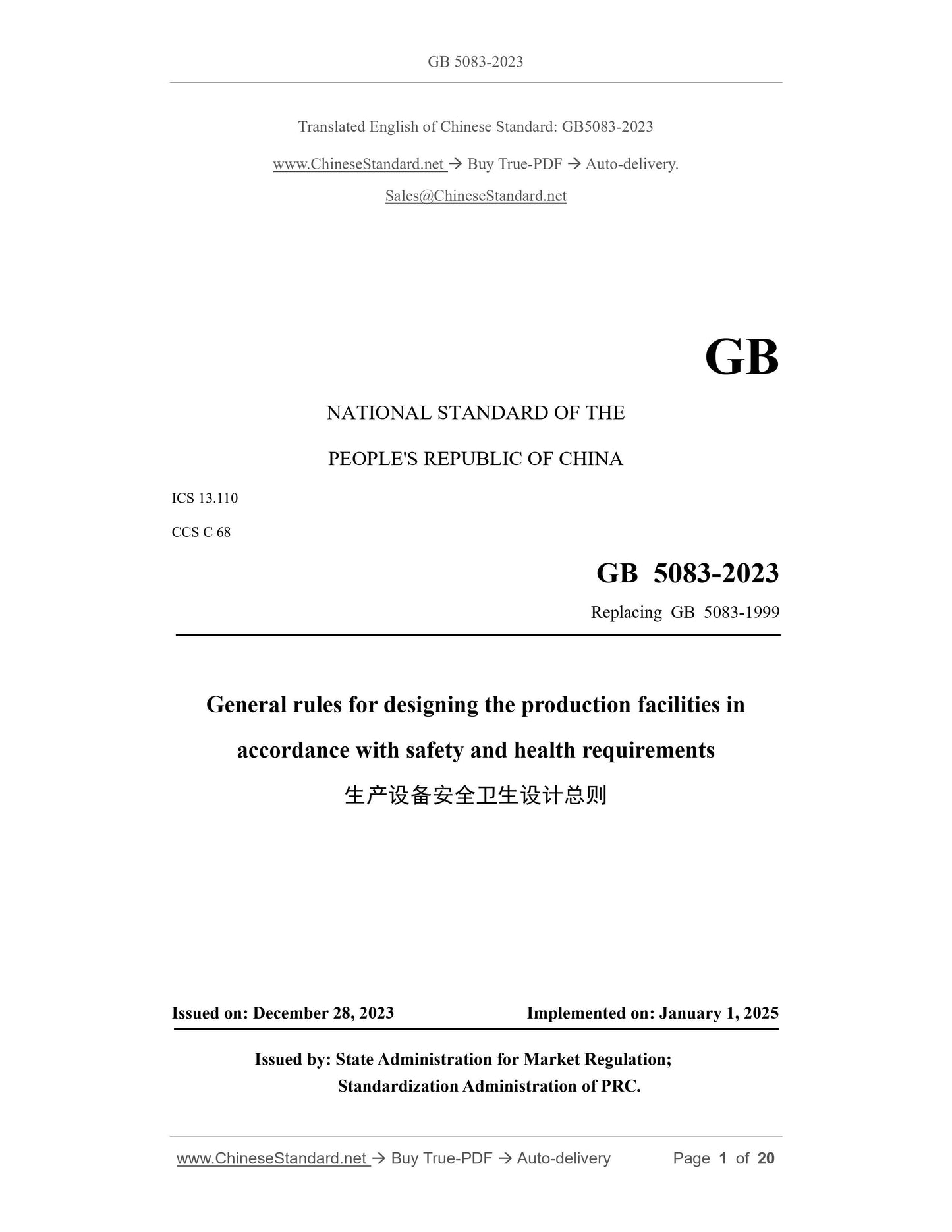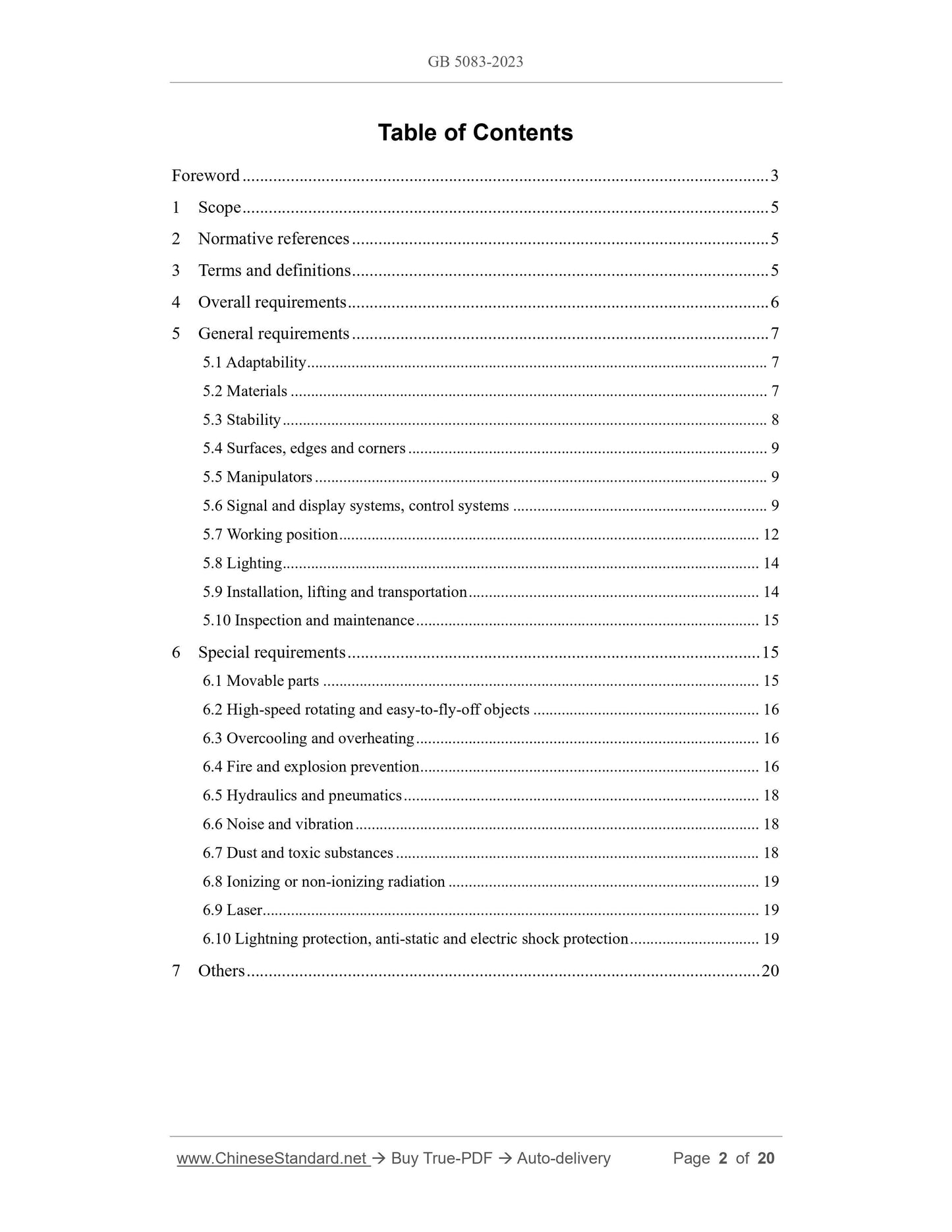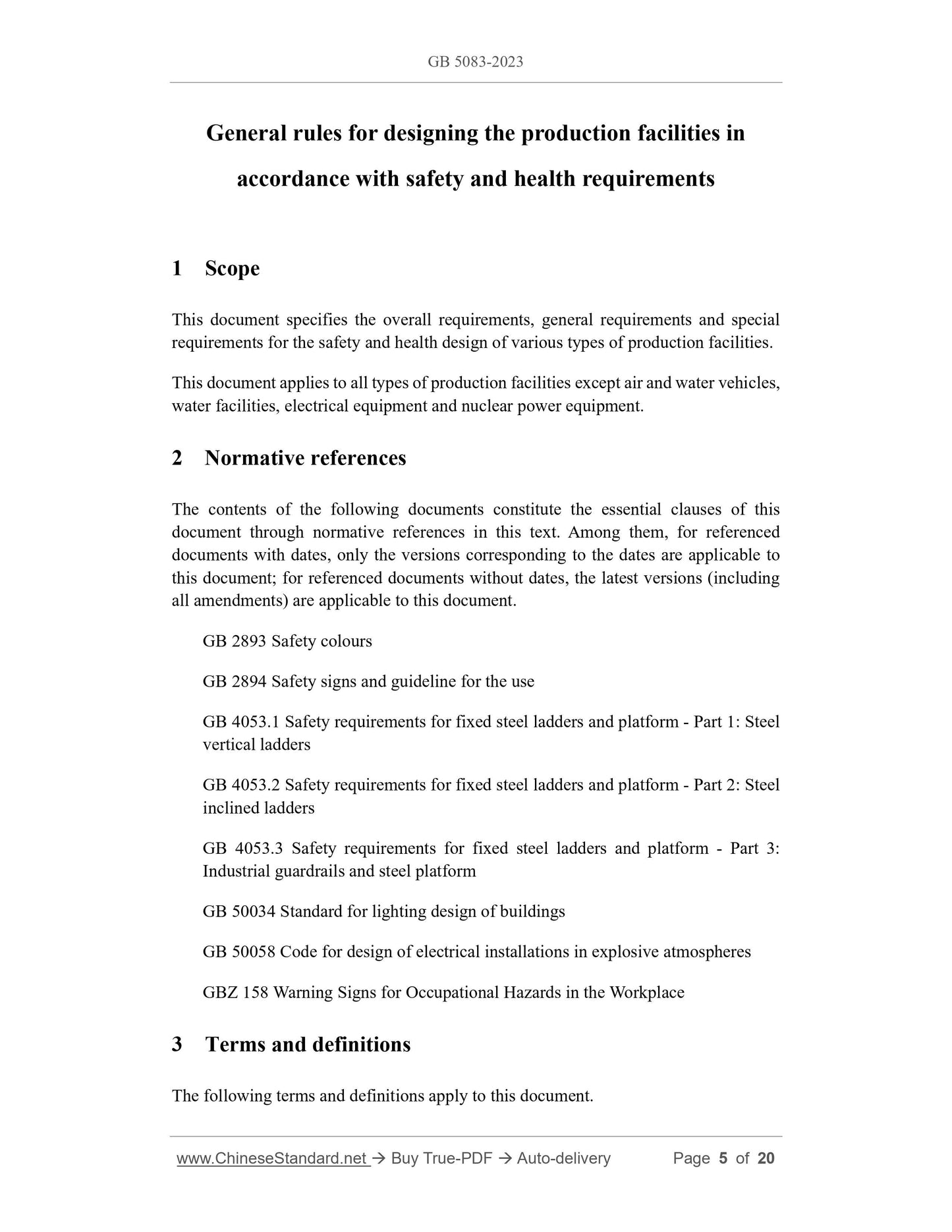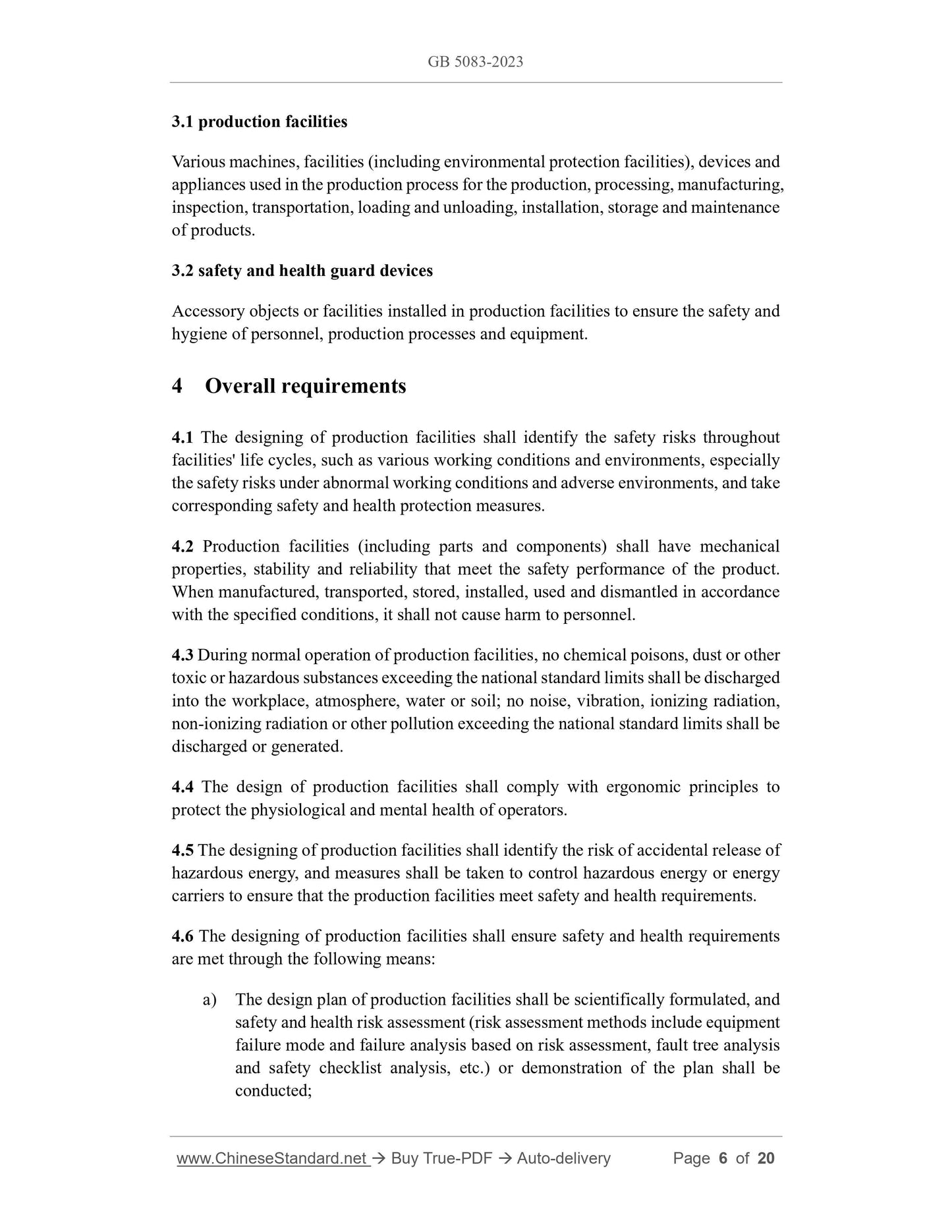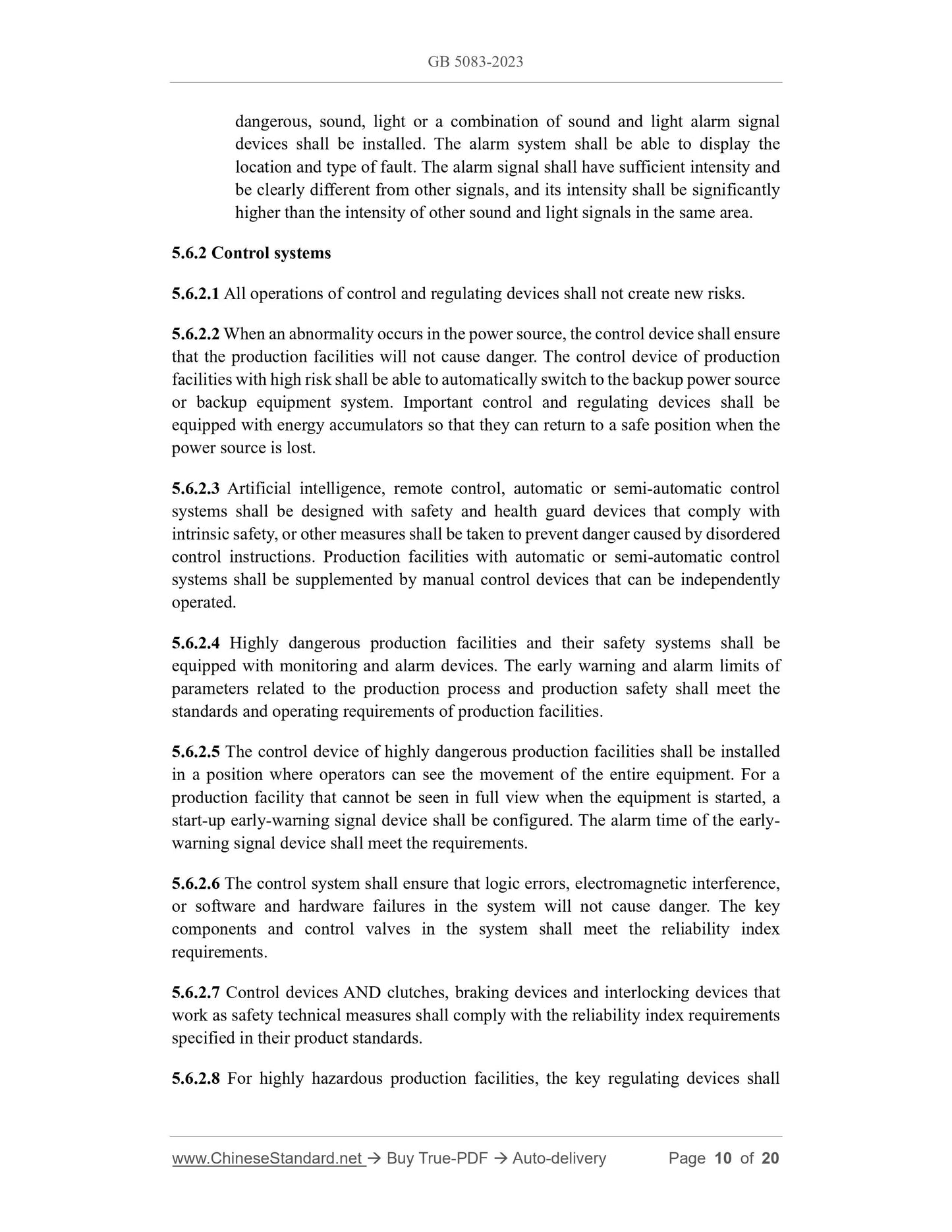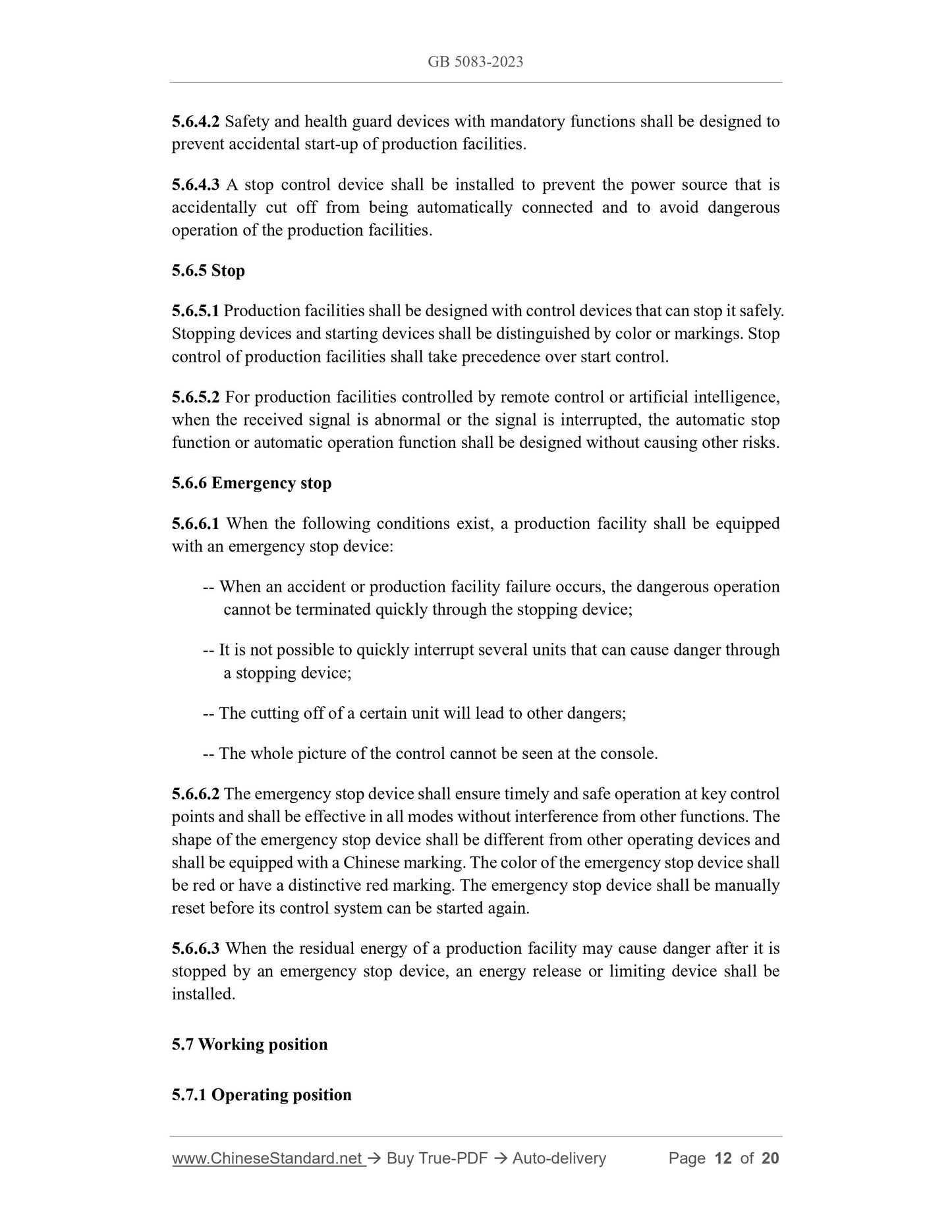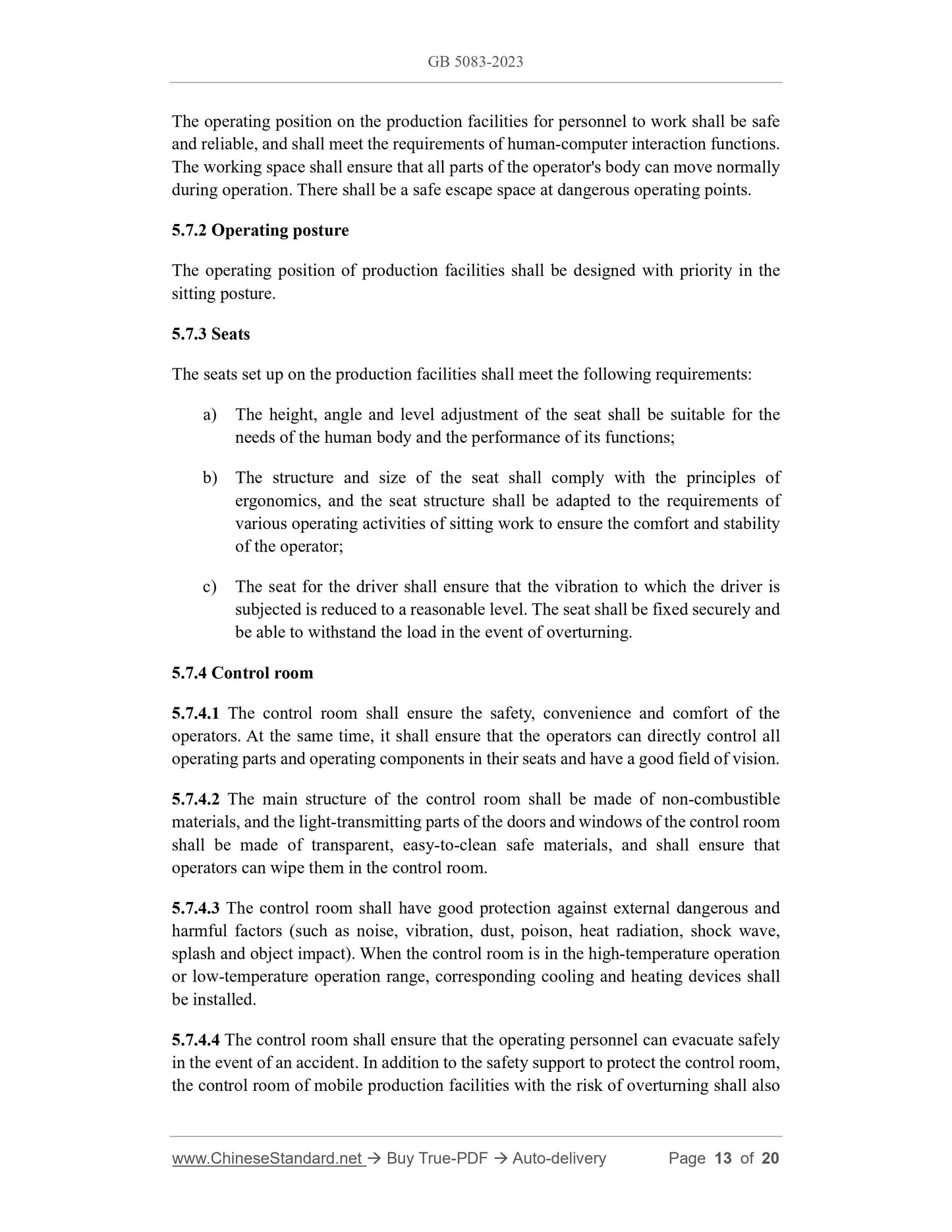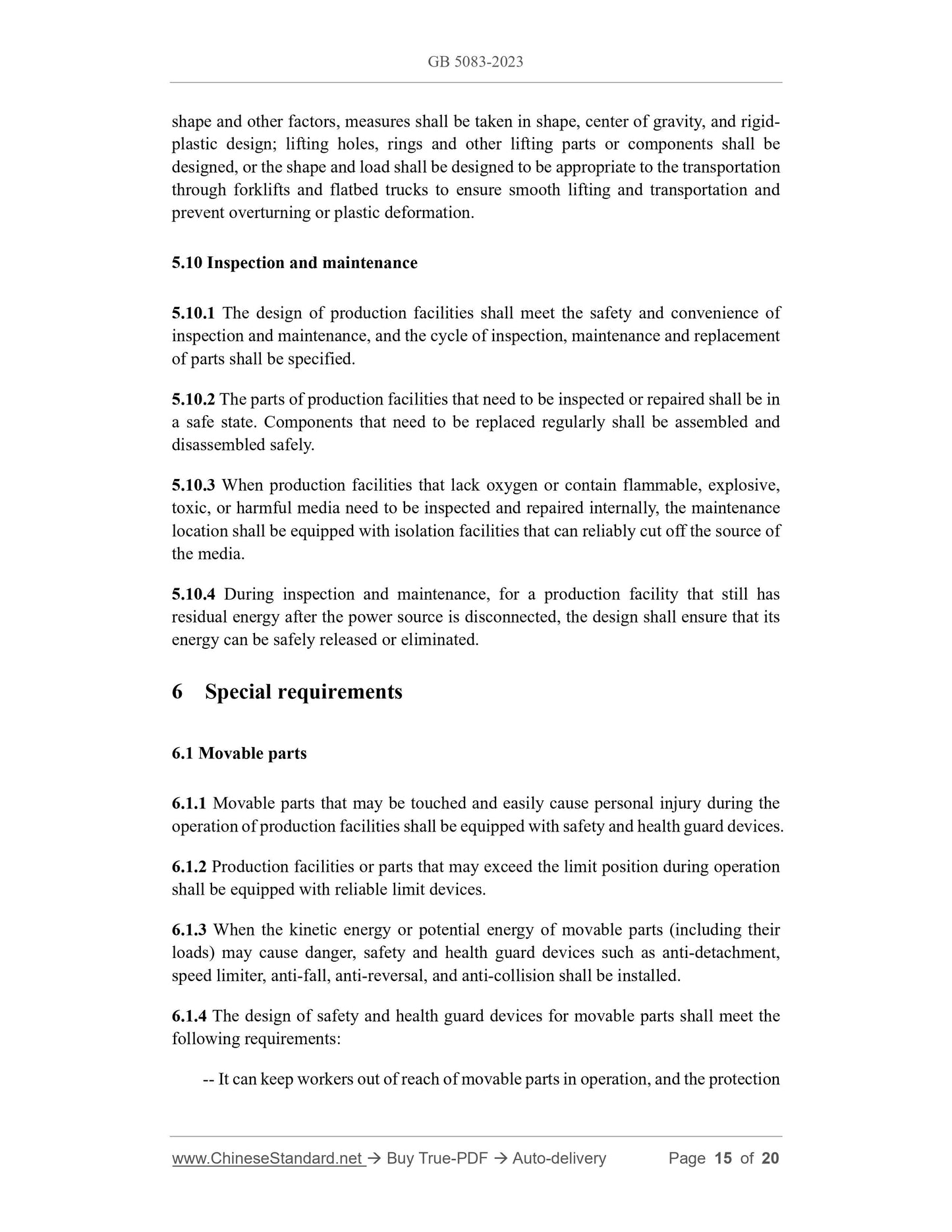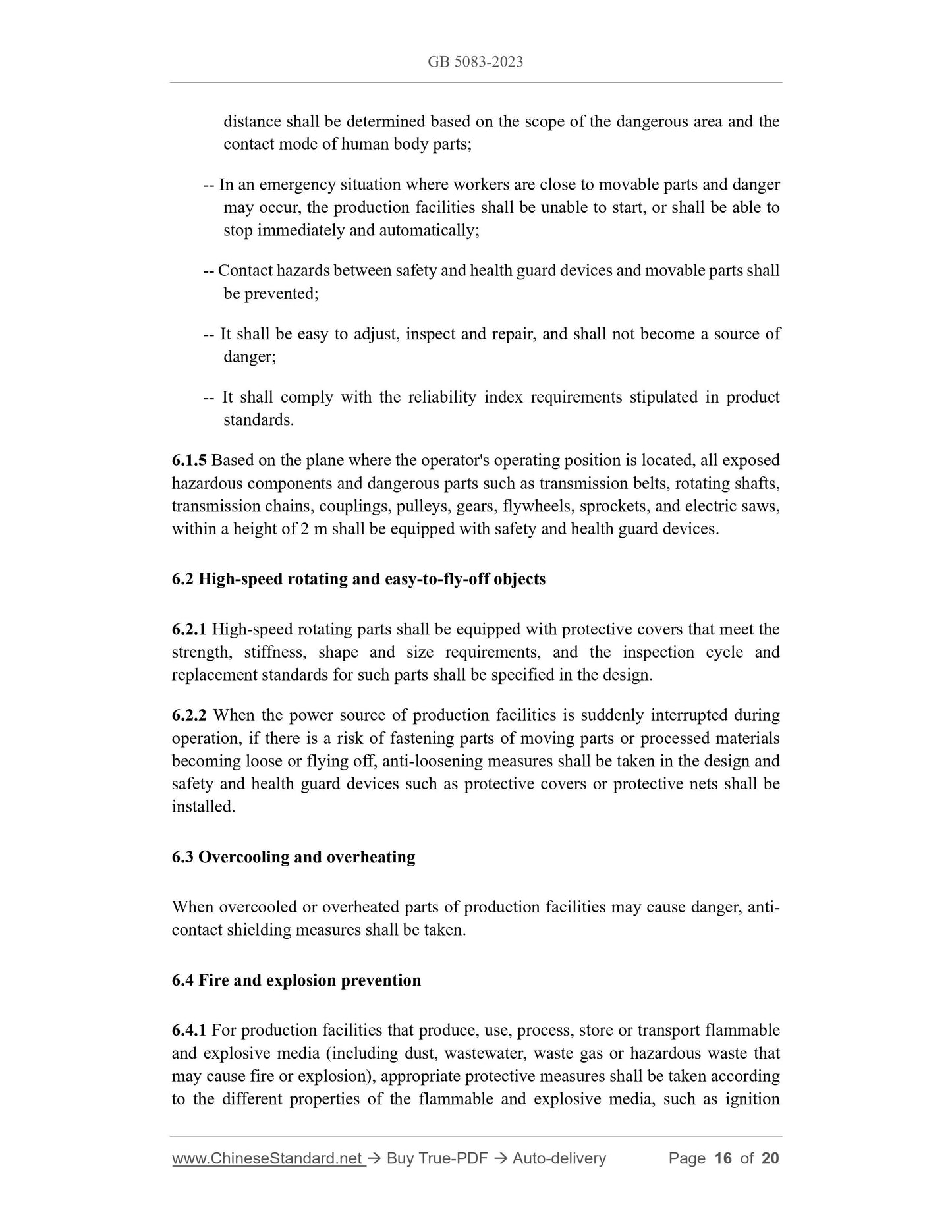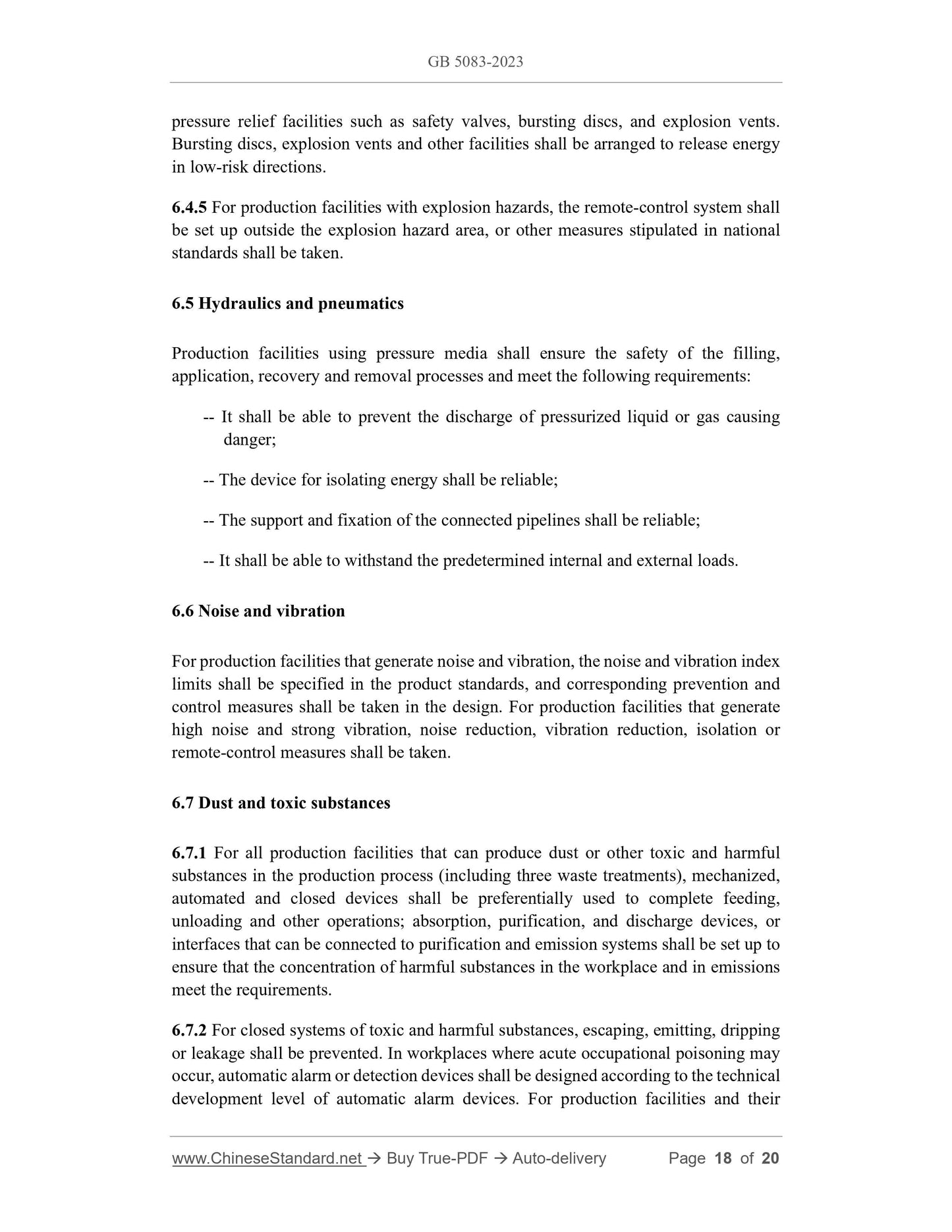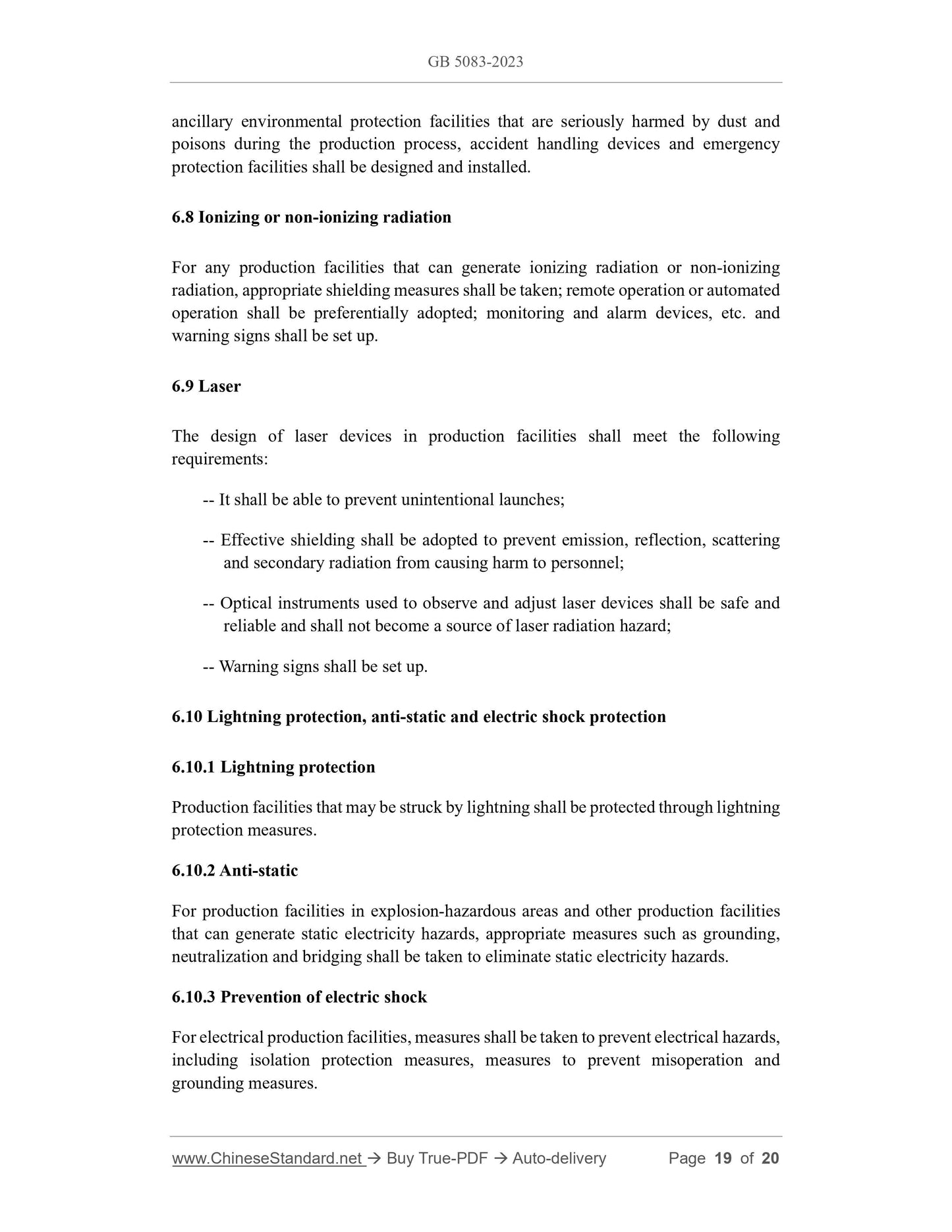1
/
of
11
www.ChineseStandard.us -- Field Test Asia Pte. Ltd.
GB 5083-2023 English PDF
GB 5083-2023 English PDF
Regular price
$275.00
Regular price
Sale price
$275.00
Unit price
/
per
Shipping calculated at checkout.
Couldn't load pickup availability
GB 5083-2023: General rules for designing the production facilities in accordance with safety and health requirements
Delivery: 9 seconds. Download (and Email) true-PDF + Invoice.Get Quotation: Click GB 5083-2023 (Self-service in 1-minute)
Newer / historical versions: GB 5083-2023
Preview True-PDF
Scope
This document specifies the overall requirements, general requirements and specialrequirements for the safety and health design of various types of production facilities.
This document applies to all types of production facilities except air and water vehicles,
water facilities, electrical equipment and nuclear power equipment.
Basic Data
| Standard ID | GB 5083-2023 (GB5083-2023) |
| Description (Translated English) | General rules for designing the production facilities in accordance with safety and health requirements |
| Sector / Industry | National Standard |
| Classification of Chinese Standard | C68 |
| Classification of International Standard | 13.110 |
| Word Count Estimation | 14,139 |
| Date of Issue | 2023-12-28 |
| Date of Implementation | 2025-01-01 |
| Older Standard (superseded by this standard) | GB 5083-1999 |
| Issuing agency(ies) | State Administration for Market Regulation, China National Standardization Administration |
Share
